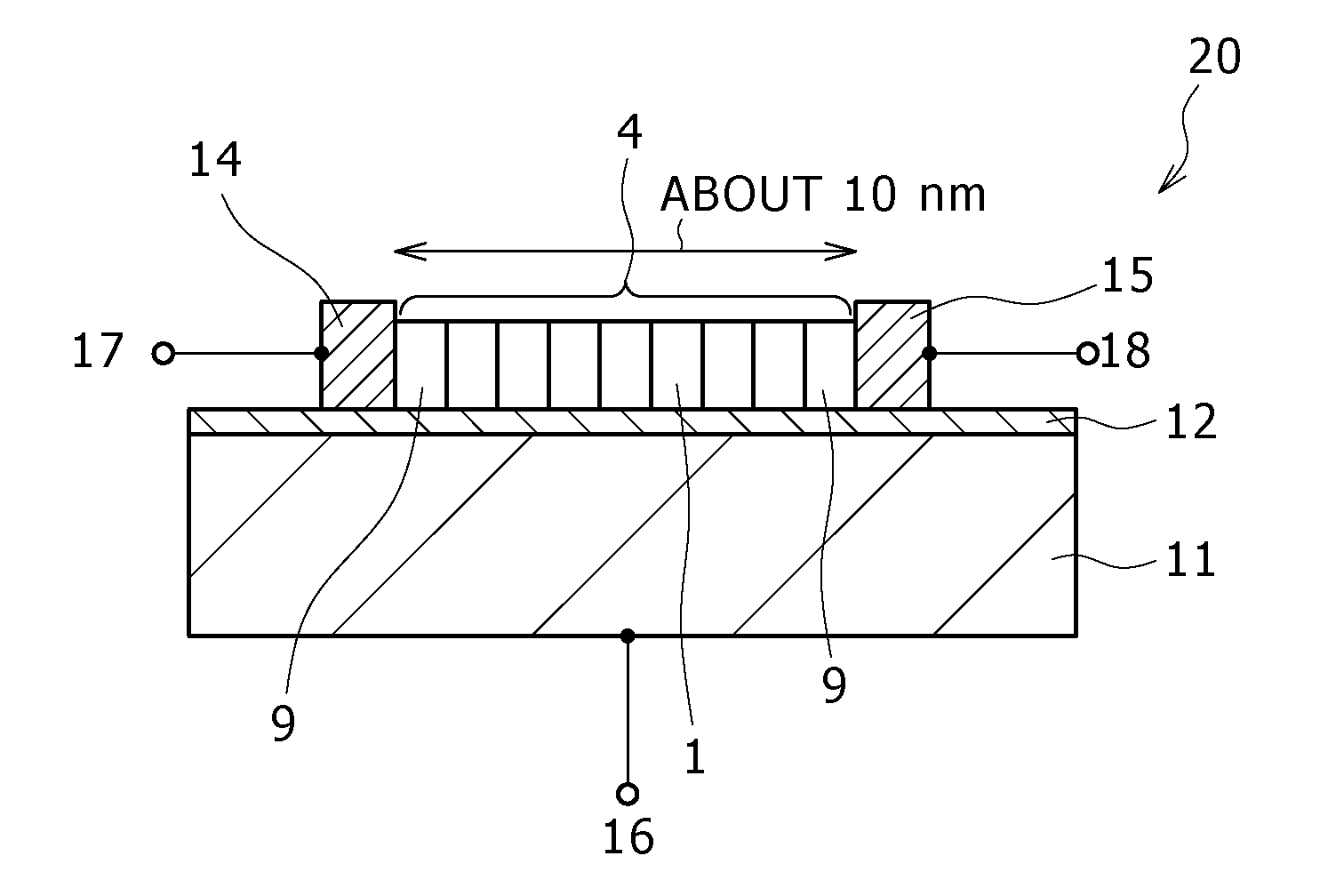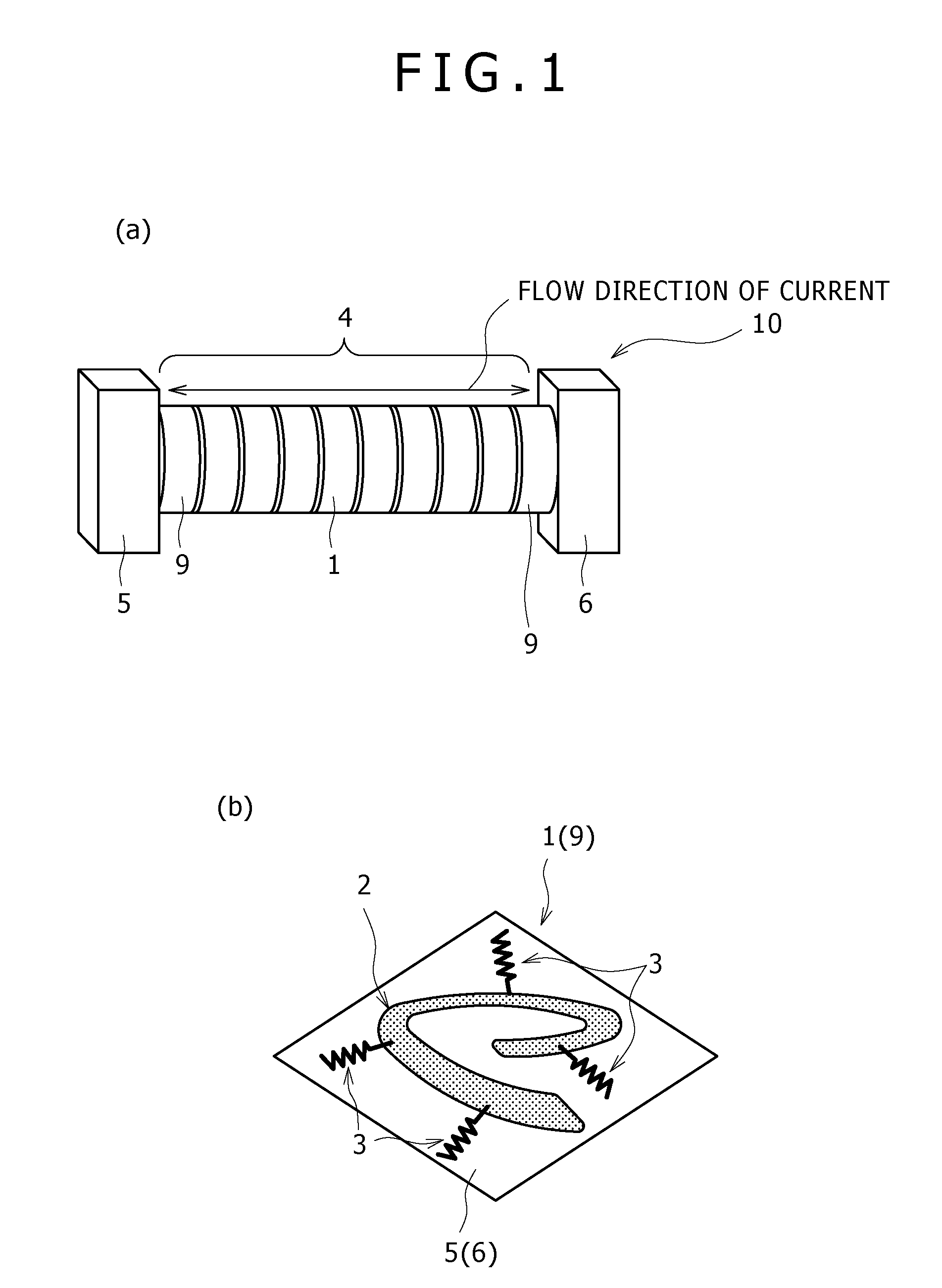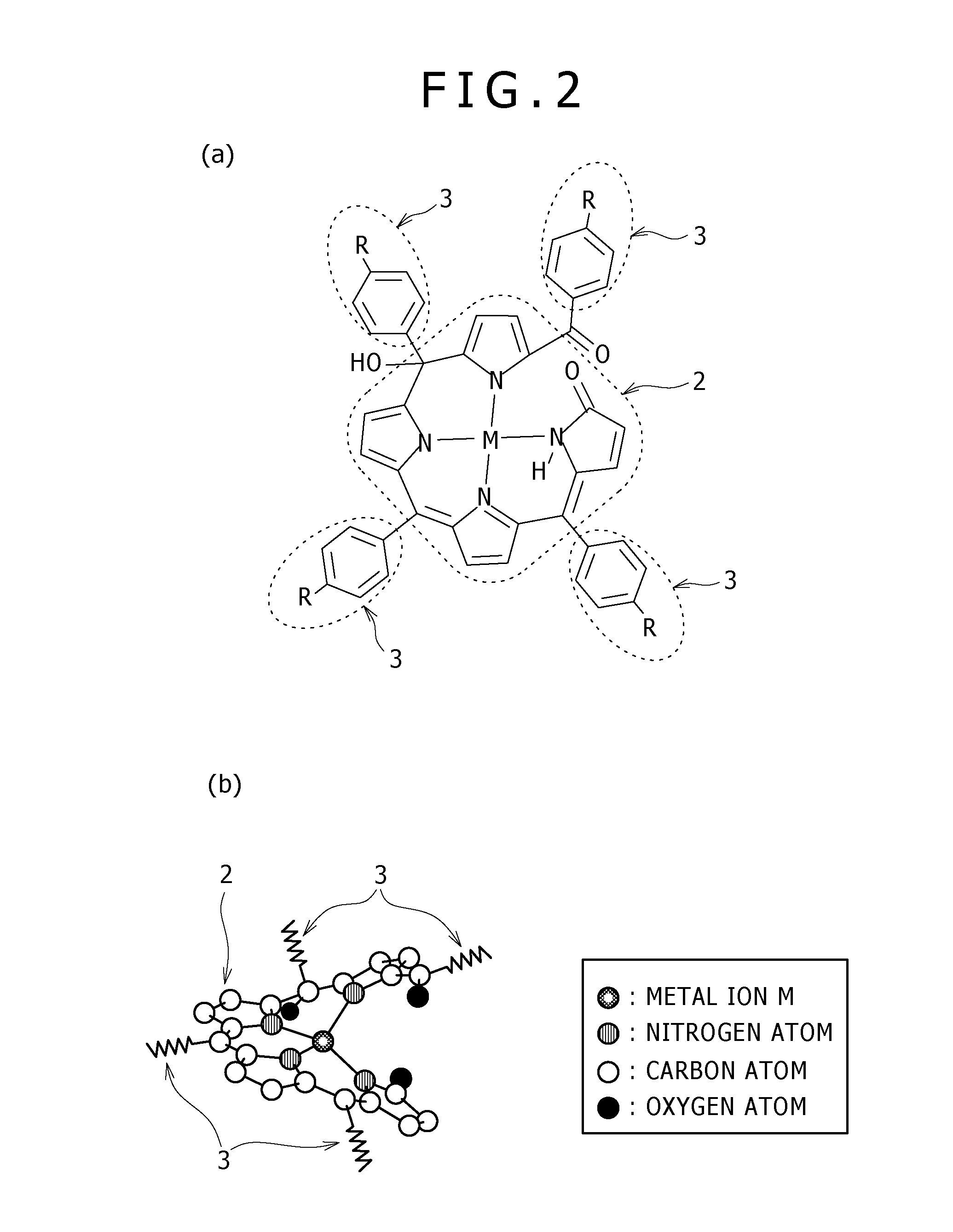Functional molecular element, process for producing the same and functional molecular device
- Summary
- Abstract
- Description
- Claims
- Application Information
AI Technical Summary
Benefits of technology
Problems solved by technology
Method used
Image
Examples
embodiment 1
[0068]In Embodiment 1, an example of the functional molecular element corresponding mainly to claims 1 and 2 and claims 16 and 17 will be described.
[0069]In (a) of FIG. 2, there is shown the structural formula of one example of molecular structure of a π-electron conjugated molecule 1 constituting the above-mentioned array structure in Embodiment 1. In (b) of FIG. 2, there is shown a schematic illustration for showing mainly the stereostructure of a substantially disk-shaped skeleton moiety 2 of the π-electron conjugated molecule 1 shown in (a) of FIG. 2. In (b) of FIG. 2, a metal ion M, nitrogen atoms, carbon atoms and oxygen atoms constituting the skeleton moiety 2 are shown as spheres, while hydrogen atoms are omitted, and side chain moieties 3 are shown in an extremely simplified or omitted form.
[0070]As shown in (a) and (b) of FIG. 2, the skeleton moiety 2 of the π-electron conjugated molecule 1 has biladienone (specifically, 4,9-biladien-1-one) as its fundamental structure. Bi...
embodiment 2
[0083]In Embodiment 2, as an example of a functional molecular device corresponding mainly to claims 14 and 15, a functional molecular device will be described in which the functional molecular element 10 described in Embodiment 1 above is formed between opposed electrodes and which is configured as an insulated gate field effect transistor. FIG. 3 is a sectional view for illustrating the structure of an insulated gate field effect transistor 20 in the present embodiment.
[0084]As shown in FIG. 3, in the insulated gate field effect transistor 20, a doped silicon substrate 11 serves also as a gate electrode 13, which is the above-mentioned control electrode. A silicon oxide layer as a gate insulating film 12 is formed on the surface of the silicon substrate 11. A source electrode 14 and a drain electrode 15 which are composed of gold, for example, are formed on the silicon oxide layer as the above-mentioned opposed electrodes, and the array structure 4 described in Embodiment 1 is dis...
example
[0091]Now, examples of the present invention will be described in detail below.
[0092]In (a) of FIG. 4, there is shown the structural formula of a π-electron conjugated molecule 7 (corresponding to the above-mentioned π-electron conjugated molecule 1) having a substantially disk-shaped skeleton moiety 2 which is used for producing the functional molecular element 10 in the present examples. In (b) and (c) of FIG. 4, there are shown the structural formulas of 4-pentyl-4′-cyanobiphenyl (5CB) and tetrahydrofuran (THF), which are solvents used in producing the functional molecular elements 10. The π-electron conjugated molecule 7 is a zinc complex of a biladienone derivative which has a phenyl group with a dodecyl group —C12H25 linked thereto at the para position, as each of flexible side chain moieties 3.
[0093]For correct evaluation of the characteristics of the functional molecular element 10, the functional molecular element 10 should be produced with good reproducibility. For this pu...
PUM
 Login to View More
Login to View More Abstract
Description
Claims
Application Information
 Login to View More
Login to View More - R&D
- Intellectual Property
- Life Sciences
- Materials
- Tech Scout
- Unparalleled Data Quality
- Higher Quality Content
- 60% Fewer Hallucinations
Browse by: Latest US Patents, China's latest patents, Technical Efficacy Thesaurus, Application Domain, Technology Topic, Popular Technical Reports.
© 2025 PatSnap. All rights reserved.Legal|Privacy policy|Modern Slavery Act Transparency Statement|Sitemap|About US| Contact US: help@patsnap.com



